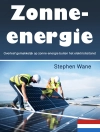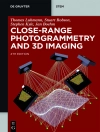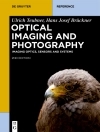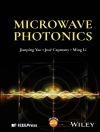This book, now in its fourth edition, is a well-known classic on the ultrafast nonlinear and linear processes responsible for supercontinuum generation. The book begins with chapters reviewing the experimental and theoretical understanding of the field along with key applications developed since the discovery of the supercontinuum effect. The chapters that follow cover recent research activity on supercontinuum phenomena, novel applications, and advances achieved since the publication of the previous edition. The new chapters focus on: filamentation in gases, air, and condensed media; conical emission by four-wave mixing and X-waves; electronic self-phase mechanism; higher harmonics generation; attosecond laser pulses; complex vector beam supercontinuum; higher order self-phase modulation and cross-phase modulation; nonlinear supercontinuum interference in uniaxial crystals; new nonlinear microscopes involving supercontinuum and ultrafast lasers with biomedical applications; and other current supercontinuum applications in communications.
The Supercontinuum Laser Source is a definitive work by one of the discoverers of the white light effect. It is indispensable reading for any researcher or student working in the field of ultrafast laser physics.
Chapter 6 is available open access under a Creative Commons Attribution 4.0 International License via link.springer.com.
Tabella dei contenuti
Chapter 1: Theory of Self Phase Modulation and Spectral Broadening.- Chapter 2: Supercontinuum Generation and Condensed Matter.- Chapter 3: Ultrashort Pulse Propagation in Nonlinear Dispersive Fibers.- Chapter 4: Cross-Phase Modulation: A New Technique for Controlling the Spectral, Temporal, and Spatial Properties of Ultrashort Pulses.- Chapter 5: Fiber Based Supercontinuum.- Chapter 6: All-normal dispersion fiber supercontinuum – principles, design, and applications of a unique white light source.- Chapter 7: Self-focusing and continuum generation in gases.- Chapter 8: Attosecond Extreme Ultraviolet Supercontinuum.- Chapter 9: Supercontinuum in Telecom Applications.- Chapter 10: Twisted Light in Supercontinuum: from Self-Phase Modulation to Superfluidity in Kerr Medium.- Chapter 11: Conical 4 Wave Mixing Supercontinuum in BK-7 and Calcite with Femtosecond Pulses.- Chapter 12: Supercontinuum in IR–MIR from narrow band gap bulk solid state materials.- Chapter 13: Chalcogenide Glass Fibers for Mid-IR Supercontinuum Generation.- Chapter 14: Quantum mechanical theory (QMT) and treatment of NLS equations for supercontinuum generation.- Chapter 15: All-solid soft glass photonic crystal fibers for coherent supercontinuum generation.- Chapter 16: Supercontinuum generation in Birefringent All Normal Dispersion Fibers.- Chapter 17: Ultra-Supercontinuum Generation and Higher Harmonic Generation from intense ultrafast laser pulses in various states of matter.
Circa l’autore
Robert R. Alfano, Distinguished Professor of Science and Engineering at The City College of the City University of New York, has contributed significantly to the field of ultrafast laser science, discovered the supercontinuum in 1970 and continues research to date, and is a pioneer in the application of light and development of new tunable Cr3+/Cr4+ lasers, advance of laser spectroscopic and optical imaging techniques for condensed matter, biomedical photonics, optical biopsy, and study of ultrafast optical pulse propagation and imaging in scattering media. He is a fellow of APS, OSA, IEEE, NY Academy of Science, and is an Alfred P. Sloan fellow. He received his Ph D in physics from New York University and spent 8 years at GTE Labs (now Verizon) before joining CCNY. Prof. Alfano received the OSA Charles Hard Townes Award in 2008, the SPIE Britton Chance Biomedical Optics Award in 2012, the APS Arthur L Schawlow Prize in Laser Science in 2013, OSA Michael S. Feld Award for Biophotonics in 2016, and SPIES Gold Medal in 2019.












